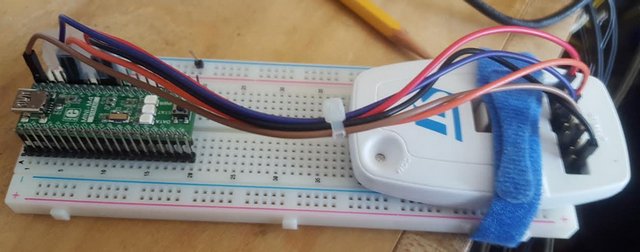Some are not teensy compatible, but there is probably the same low cost SWD for Freescale. And SWD is agnostic as to CPU. It's the PC software for debugging and flashing with SWD that is the key. Others below are.
Free with IAR, Keil, and in-built to Visual GDB. Perhaps some versions of Eclipse too.
Many ST eval boards that are free or almost so, have an SWD programmer built-in to the board. Else you buy an ST-Link v2 from Mouser, etc.
flash & debug
https://www.youtube.com/watch?v=_ggJXbe885U
http://andybrown.me.uk/2014/09/09/stlinkv2/
Freescale must have the same.... let's google a bit
Here's one that uses a low cost Freescale Freedom board to be an SWD interface. Not sure what PC software would be used for debugging with this rig. But Surely there's a Freescale equivalent to the ST-Link pod.
http://mcuoneclipse.com/2013/04/21/using-the-freedom-board-as-jtag-programmer/
Here, the MS Visual Studio (free) is used with SWD and Freescale as the target. For the Teensy 3, "Visual Micro" exists but is not SWD oriented.
http://visualgdb.com/tutorials/arm/kinetis/
P&E micro has a grossly overpriced pod, but less than Seeger
http://www.pemicro.com/products/product_viewDetails.cfm?product_id=15320137
visual GDB is not free, but it's excellent. $90 as I recall.
http://visualgdb.com/?features=embedded
Says it supports Kenetis. It has several SWD and JTAG hardware drivers.
It, like Visual micro, uses MS Visual Studio as the IDE but GCC as the compiler targeting whatever GCC targets, including most all ARMs.
But it's not Mac compatible, nor Linux.
Visual Micro (free) with now-free Visual Studio (windows only) has a "software debugger" option. It acts like a debugger with trace and breakpoints. But it has no JTAG/SWD. Instead, in the IDE editor, you setup breakpoints and trace points/criteria. It then adds the requisite source code to your project to react to these debugging settings. This works in the Teensy and Arduino-alike projects since it's all software.
here's visual GDB, a non-Arduino but excellent and low cost development tool for many embedded projects, as well as Linux and Android.
http://visualgdb.com/tutorials/
So, more digging with Google will turn up more for Freescale. But the choices are few, as compared to other MCUs.
(Apologies to the forum here, I must add that per my experience with ARMs and with the embedded community, esp. avocational/student, ST rather than Freescale is more prevalent, so too the tools.)


